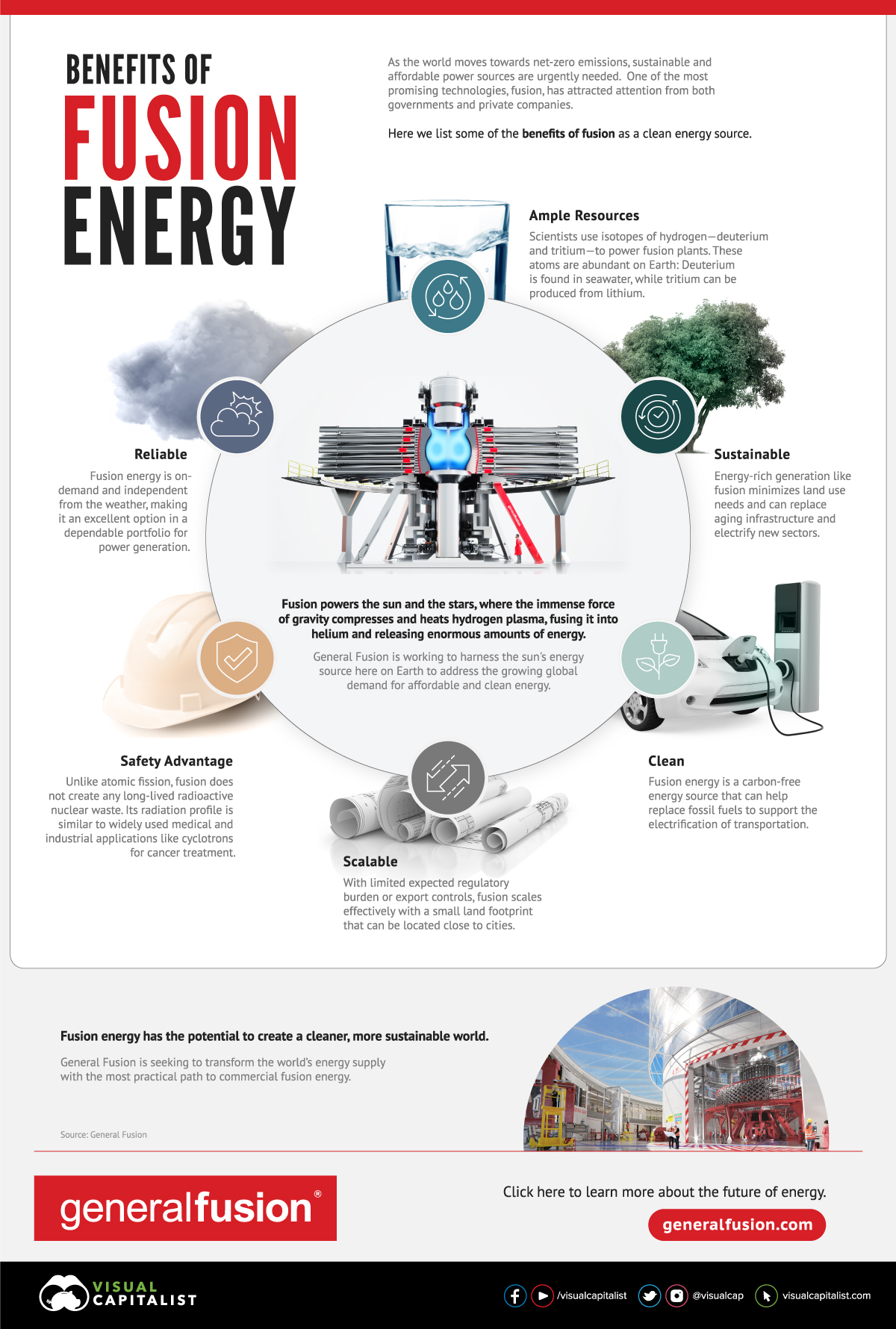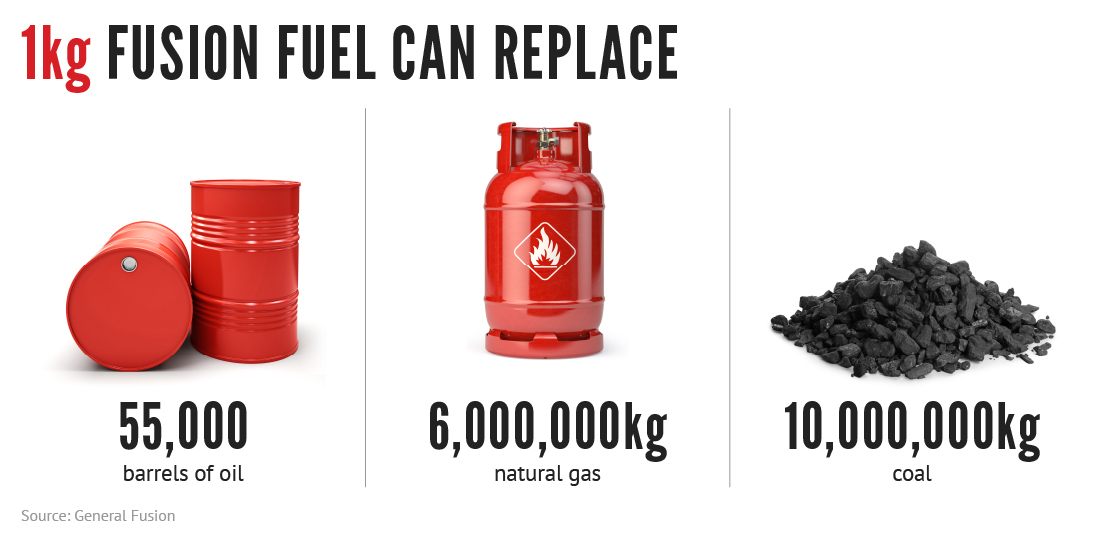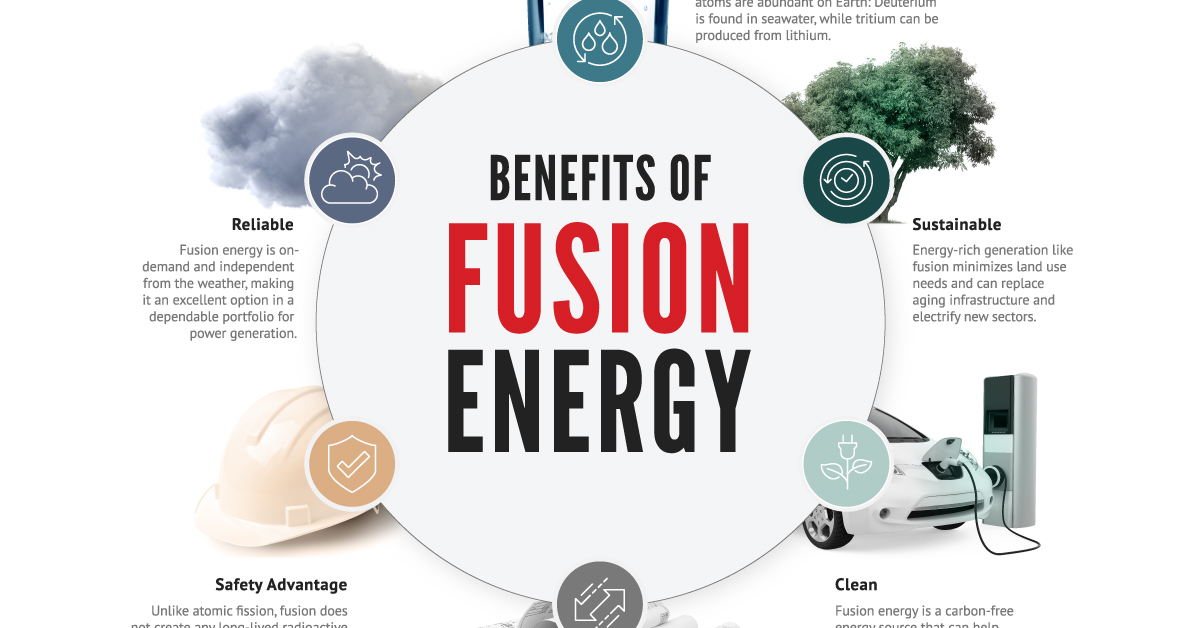What are the Benefits of Fusion Energy?

What are The Benefits of Fusion Energy?
As the world moves towards net-zero emissions, sustainable and affordable power sources are urgently needed by humanity.
One of the most promising technologies, fusion, has attracted the attention of governments and private companies like Chevron and Google. In fact, Bloomberg Intelligence has estimated that the fusion market may eventually be valued at $40 trillion.
In this infographic sponsored by General Fusion, we discuss the benefits of fusion as a clean energy source.
The Ultimate Source of Energy
Fusion powers the sun and the stars, where the immense force of gravity compresses and heats hydrogen plasma, fusing it into helium and releasing enormous amounts of energy. Here on Earth, scientists use isotopes of hydrogen—deuterium and tritium—to power fusion plants.
Fusion energy offers a wide range of benefits, such as:
1. Ample resources:
Both atoms necessary for nuclear fusion are abundant on Earth: deuterium is found in seawater, while tritium can be produced from lithium.
2. Sustainable
Energy-dense generation like fusion minimizes land use needs and can replace aging infrastructure like old power plants.
3. Clean
There are no CO₂ or other harmful atmospheric emissions from the fusion process.
4. Scalable
With limited expected regulatory burden or export controls, fusion scales effectively with a small land footprint that can be located close to cities.

5. Safety advantage
Unlike atomic fission, fusion does not create any long-lived radioactive nuclear waste. Its radiation profile is similar to widely used medical and industrial applications like cyclotrons for cancer treatment.
6. Reliable
Fusion energy is on-demand and independent from the weather, making it an excellent option in a dependable portfolio for power generation.
Commercializing Fusion Energy
More than 130 countries have now set or are considering a target of reducing emissions to net-zero by 2050. Meanwhile, global energy demand is expected to increase by 47% in the next 30 years.
While renewables like wind and solar are intermittent and need a baseload source of clean energy to supplement them, fusion, when commercially implemented, could deliver clean, abundant, reliable, and cost-competitive energy.
General Fusion seeks to transform the world’s energy supply with the most practical path to commercial fusion energy. Click here to learn more.

-

 Lithium2 days ago
Lithium2 days agoRanked: The Top 10 EV Battery Manufacturers in 2023
Asia dominates this ranking of the world’s largest EV battery manufacturers in 2023.
-

 Energy7 days ago
Energy7 days agoThe World’s Biggest Nuclear Energy Producers
China has grown its nuclear capacity over the last decade, now ranking second on the list of top nuclear energy producers.
-

 Energy4 weeks ago
Energy4 weeks agoThe World’s Biggest Oil Producers in 2023
Just three countries accounted for 40% of global oil production last year.
-

 Energy1 month ago
Energy1 month agoHow Much Does the U.S. Depend on Russian Uranium?
Currently, Russia is the largest foreign supplier of nuclear power fuel to the U.S.
-

 Uranium2 months ago
Uranium2 months agoCharted: Global Uranium Reserves, by Country
We visualize the distribution of the world’s uranium reserves by country, with 3 countries accounting for more than half of total reserves.
-

 Energy2 months ago
Energy2 months agoVisualizing the Rise of the U.S. as Top Crude Oil Producer
Over the last decade, the United States has established itself as the world’s top producer of crude oil, surpassing Saudi Arabia and Russia.


